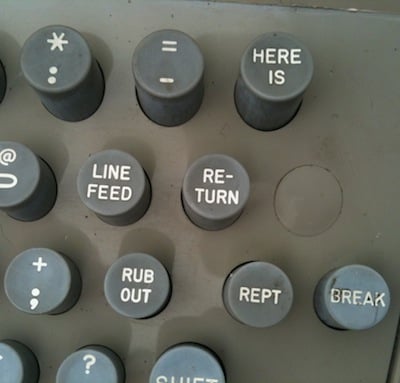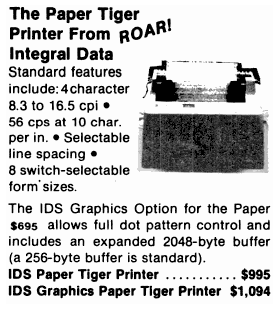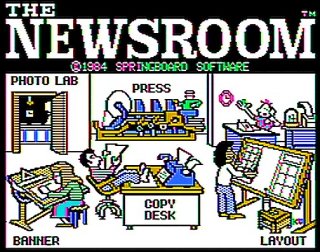Original URL: https://www.theregister.com/2010/11/23/charles_eicher_how_i_invented_dtp/
How I invented Desktop Publishing
Well, OK. Me, and a thousand others
Posted in Software, 23rd November 2010 14:48 GMT
Today's Desktop Publishing systems like the Macintosh with PostScript are taken for granted, but it wasn't so long ago that these technologies were impossible.
Early "homebrew" computer hackers recognized the demand for computer publishing and paved the way for the professional systems we use today. Some of those inventions were just done for the sheer fun of a cool application, without thought to any commercial use. I was one of those hackers, and I may have invented DTP - and given it away for free - without realizing what I had done.
Before DTP, typesetting was terribly laborious. You would type your text on a typewriter with written "type specs." The typesetter would encode your specifications of typeface, size, and the width of the text column into SGML, and punch that into paper tape. The tape was fed into an optical typesetter that wrote the type on photo paper. That phototype page may or may not be what you wanted, it might need revisions, which could take another whole day. I recall only rarely seeing type being right the first time.
In 1980, I worked at a tiny computer store in Dubuque, Iowa. Some of my clients were textbook publishers with intensive typesetting demands. They wanted a way to ditch their Teletype ASR-33 punch tape machines. I converted them to CP/M machines with Wordstar, feeding the stored markup via serial port to phototypesetters. They thought this was revolutionary; they loved the improvement.

But I didn't love it. Wordstar nagged at me with its difficult formatting. Professional typesetters never used its formatting, merely used it as a text editor, storing their text and markup on disk instead of paper tape. For word processing, it was almost impossible to do conventional typesetting tricks like printing a page with text in two columns. What you saw was not even close to what you got.
I figured I could do better. In our computer store, we always had a well-equipped Apple II demo workstation. My favorite toy was the IDS Paper Tiger dot matrix printer. It was expensive, at about $1500, and noisy, but it could print in full color… all six colors that the Apple II high resolution graphics system could display.

The Paper Tiger colour dot matrix
But nothing excited me like the Apple Graphics Tablet. The software was produced by rock music producer Todd Rundgren, for use in his music video studio, and licensed to Apple.
In Utopia, you could draw with the stylus, or type characters right on the screen, and then print to the Paper Tiger. The graphics were crude but colorful, and just barely good enough. The software was designed more for engineers and draftsmen, but since it was created by video artists, it was very flexible.
One day I had an inspiration. We sold Beagle Brothers screen fonts. They were known as "BaggieWare" since they came on floppy disks in cheap plastic bags. The Graphics Tablet software could load the fonts and type them on screen.
This was the final element, Desktop Publishing was born.
The demo
This system had all the basic requirements of DTP that are so common today. It had a small, affordable microcomputer that fit on a desk top. The display accurately showed what would print, pixel for pixel - WYSIWYG. A mouse-like stylus allowed easy input and editing of graphics, and users could load and change their fonts on demand.
I first stumbled upon this combination when I was teaching a class in BASIC programming. At the end of the class, I created a nice diploma on the Apple II, with large graphic fonts and decorative borders. I signed the form, then I had each student sign their name with the stylus, and I printed it for them. This, as far as I know, was the first DTP document, and I didn't even save a single copy. I had no idea it was a breakthrough.
But my Apple representative did. We rarely had a visit from our Apple rep, as we were far away in the middle of nowhere. Usually the rep would only visit once every three months. One day the rep visited, and I was always ready to show my killer demos. I demonstrated the certificate and how it could be signed and printed. He loved it.
Surprisingly, the next week the same rep showed up with another Apple regional executive, and asked to see the demo again. He took copious notes. The next monthly Apple dealer newsletter had a detailed description of my demo, without attribution. The entire Apple dealer network was taught the concept of DTP.
But this system was very expensive. A basic Apple II system with Graphics Tablet and printer could cost nearly $5000, equivalent to over $14,000 in 2010 dollars. The software was difficult to use, requiring high levels of technical skill to integrate features that weren't designed to work together (like the fonts).
Soon, commercial software developers would create programs specifically dedicated to the task of DTP. Springboard Software's The Newsroom application was released in 1984, just as the first Macintosh was released. This was the moment when DTP moved from homebrew hackers to professional software developers.


When the Macintosh shipped, it was designed for graphics. Apple established itself as a standard of DTP; its system software was designed for use with Adobe's PostScript laser printer. But it would not be until 1987 when the Mac II with a color display shipped, finally surpassing the humble Apple II in graphics capabilities.
So who invented Desktop Publishing?
Maybe I did, and didn't realize it. Maybe it was Todd Rundgren. But surely this was a technology waiting to be invented, discovered by multiple people at the same time.
The demand was there - hackers toyed with the idea just for their personal use. These experiments showed the way for Apple and Adobe, and many others, to create the modern multi-billion dollar publishing industry we take for granted today. It didn't even exist 30 years ago.
Unfortunately, Apple never understood how to market DTP. Its application was immediate and obvious, but they rebranded it as "Desktop Media" and ran a notorious "Helocar" advertising campaign. It was Apple's first well-publicized flop. DTP was Apple's killer application, and it almost killed the company. I'll describe this in more detail in my next installment of Mac history from the trenches. ®
Charles Eicher is an artist and multimedia producer in the American Midwest. He has a special interest in intellectual property rights in the Arts and Humanities. He writes at the Disinfotainment weblog.